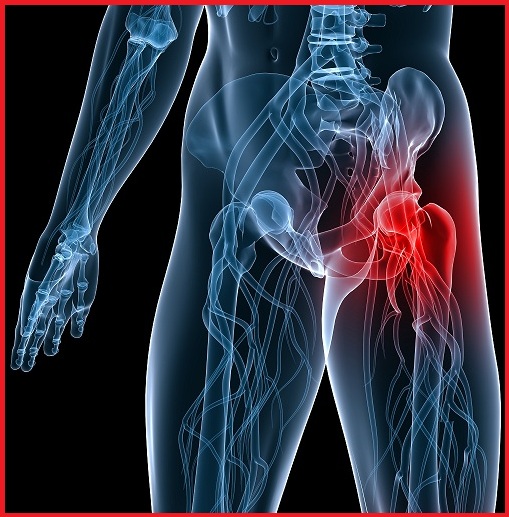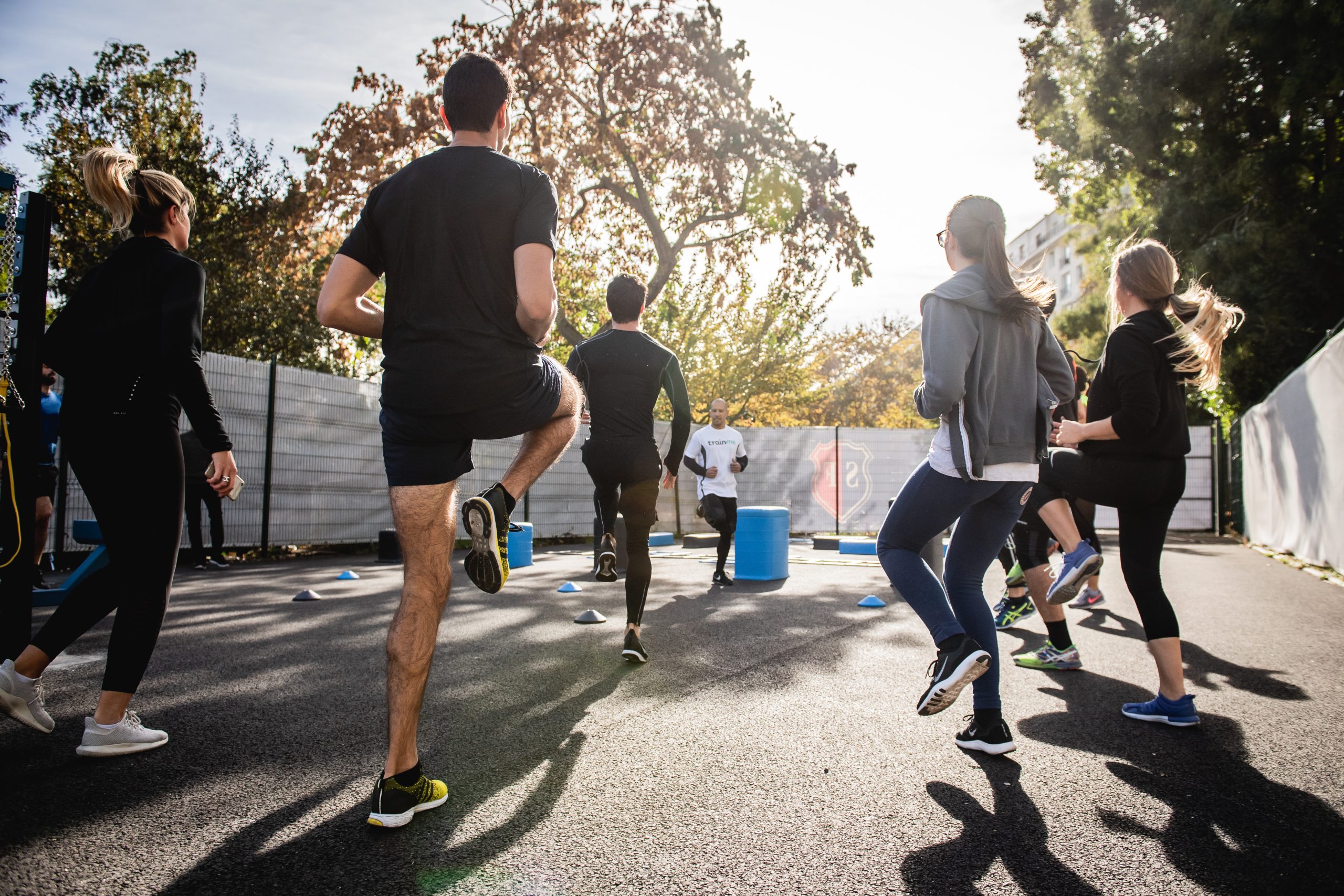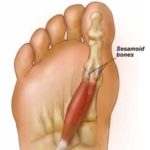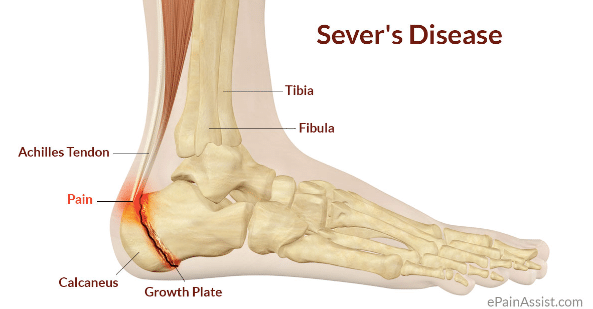
Sever’s disease
Sever’s disease is a common cause of heel pain, particularly in the young and physically active. It usually develops just before puberty. Boys are slightly more prone to this condition than girls.
Physiotherapy can help manage the symptoms of Sever’s disease so that the young person can continue to take part in physical activity. Another name for Sever’s disease is calcaneal apophysitis.

Cause of Sever’s disease
A big tendon called the Achilles tendon joins the calf muscle at the back of the leg to the heel. Sever’s disease is thought to occur because of a mismatch in growth of the calf bones to the calf muscle and Achilles tendon.
If the bones grow faster than the muscles, the Achilles tendon that attaches the muscle to the heel gets tight. At the same time, until the cartilage of the calcaneum is ossified (turned into bone), it is a potential weak spot. The tight calf muscle and Achilles tendon cause a traction injury on this weak spot, resulting in inflammation and pain.
Sever’s disease most commonly affects boys aged ten to 12 years and girls aged nine to 11 years, when growth spurts are beginning. Sever’s disease heals itself with time, so it is known as ‘self-limiting’.
There is no evidence to suggest that Sever’s disease causes any long-term problems or complications.
Symptoms of Sever’s disease
A few signs and symptoms point to Sever’s disease, which may affect one or both heels. These include:
- Pain at the heel or around the Achilles tendon
- Heel pain during physical exercise, especially activities that require running or jumping
- Worsening of pain after exercise
- A tender swelling or bulge on the heel that is sore to touch
- Calf muscle stiffness first thing in the morning
- Limping
- A tendency to tiptoe
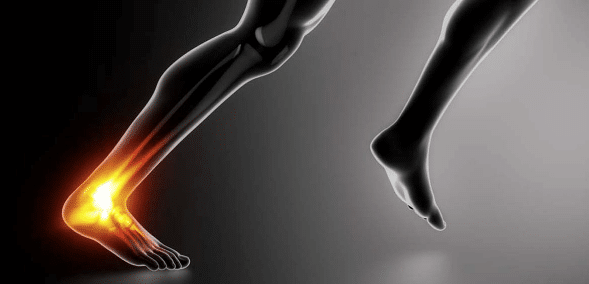
Factors that contribute to Sever’s disease
Apart from age, other factors that may contribute to developing Sever’s disease include:
- Physical activity – any form of exercise that is weight bearing through the legs or stresses the soft tissue can exacerbate the pain of the disease.
- External factors – for example, running on hard surfaces or wearing inappropriate shoes during sport.
- Overuse injury – very active children may repeatedly but subtly injure the bones, muscles and tendons of their feet and ankles. In time, the accumulated injuries cause symptoms.
Diagnosis of Sever’s disease
A doctor or other health professional such as a physiotherapist can diagnose Sever’s disease by asking the young person to describe their symptoms and by conducting a physical examination. In some instances, an x-ray may be necessary to rule out other causes of heel pain, such as heel fractures. Sever’s disease does not show on an x-ray because the damage is in the cartilage.
Treatment of Sever’s disease
Treatment depends on the severity of the condition, but may include:
- Relative rest and modified activity – a physiotherapist or exercise physiologist can help work out what, and how much, activity to undertake.
- Cold packs – apply ice or cold packs to the back of the heels for around 15 minutes after any physical activity, including walking.
- Shoe inserts – small heel inserts worn inside the shoes can take some of the traction pressure off the Achilles tendons. This will only be required in the short term.
- Medication – pain-relieving medication may help in extreme cases, but should always be combined with other treatment and following consultation with your doctor). Anti-inflammatory creams are also an effective management tool.
- Splinting or casting – in severe cases, it may be necessary to immobilise the lower leg using a splint or cast, but this is rare.
- Time – generally the pain will ease in one to two weeks, although there may be flare-ups from time to time.
- Correction of any biomechanical issues – a physiotherapist can identify and discuss any biomechanical issues that may cause or worsen the condition.
- Education on how to self-manage the symptoms and flare-ups of Sever’s disease is an essential part of the treatment.
Other causes of heel pain
Causes of heel pain other than Sever’s disease include:
- Plantar fasciitis – inflammation of the ligament that runs from the heel bone along the sole of the foot. Causes include flat feet and stiff shoes.
- Bursitis – bursae are small sacs that contain fluid to lubricate moving parts such as joints and muscles. Common causes of bursitis at the back of the heel include injury, overuse and tight shoes.
- Achilles tendonitis – the Achilles tendon joins the calf muscle to the heel. Inflammation of this tendon can be caused by stiff calf muscles and running on hard surfaces like concrete or bitumen.
- Stress fracture – results when the body’s inability to respond to loading on the bone leads to weakening of the bone.
Why get treatment for Severs?
- It is a common cause of heel pain, particularly in the young and physically active.
- Just before puberty the calf bones typically grow faster than the surrounding soft tissue, which means the achilles tendon is pulled uncomfortably tight. This can lead to an injured heel.
- Treatment includes relative rest, modifying activities and teaching the young person how to manage the condition when a flare-up happens.
- It is self-limiting and rarely causes long-term problems.
Feel free to ring Pivotal Motion Physiotherapy on 07 3352 5116 to discuss your physiotherapy options.


